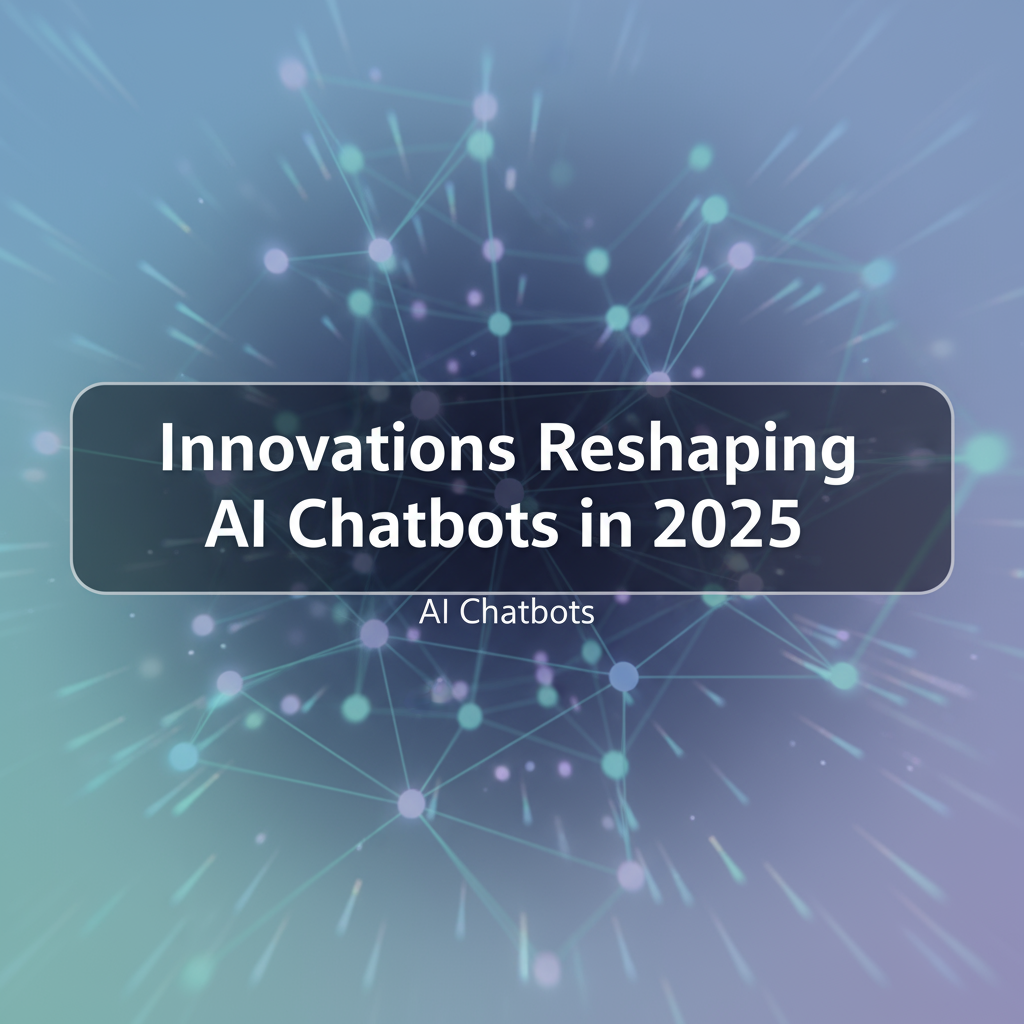Beyond ChatGPT: Innovations Reshaping AI Chatbots in 2025
Estimated reading time: 5 minutes
- AI chatbots will conduct more nuanced conversations, recognizing emotional cues.
- Automation will transform chatbots into autonomous AI agents for end-to-end processes.
- Multimodal capabilities will allow chatbots to communicate through text, voice, and images.
- Hyper-personalization will enhance user experiences through tailored recommendations.
- Privacy and ethical considerations will remain at the forefront of chatbot development.
Table of Contents
- The Evolution of AI Chatbots
- Essential Innovations and Trends in 2025
- Technical Drivers of Change
- Business Impact and Industry Applications
- Representative Comparison: Chatbots 2023 vs 2025
- In Summary
- FAQ
The Evolution of AI Chatbots
AI chatbots have significantly changed since their inception. Initially, their primary function was answering frequently asked questions through pre-programmed scripts. However, the technological landscape is shifting towards more advanced systems that harness the potential of Natural Language Processing (NLP) and Natural Language Understanding (NLU). These developments allow chatbots to hold conversations that are not only relevant but also nuanced and emotionally intelligent.
For businesses, understanding these innovations means exploring how they can leverage AI chatbots in operations, customer engagement, and beyond.
Essential Innovations and Trends in 2025
- Conversational AI and Enhanced Human-Likeness
The future of chatbots lies in their ability to conduct nuanced conversations. With advancements in NLP and NLU, chatbots in 2025 will recognize emotional cues, including sarcasm and excitement. This capability will enable chatbots to hold context over multiple interactions, resulting in richer conversations that respect user preferences and histories.
- AI Agents and End-to-End Automation
Gone are the days of basic, rule-based responses. Future chatbots, as autonomous AI agents, will complete multi-step procedures—like booking travel arrangements or managing billing—without human intervention.
- Multimodal Capabilities
AI chatbots will not just communicate through text but will integrate multimodal AI to harness text, voice, and images.
- Voice Technology and Accessibility
The rise of voice-operated chatbots will make technology more intuitive and accessible.
- Hyper-Personalization
By employing advanced data analytics and machine learning, chatbots in 2025 will deliver hyper-personalized experiences.
- Context Retention and Memory
Modern chatbots will feature context retention and memory, allowing them to remember previous interactions.
- Integration and Business Operations
Chatbots will increasingly automate various business functions, leading to substantial cost savings and efficiency gains.
- Privacy, Security, and Ethics
With expanded functionality come concerns about data privacy and security. Developers will implement robust encryption and transparent AI models.
- Multi-language Support
Future chatbots are expected to converse in multiple languages and dialects, facilitating seamless global communication and support.
Technical Drivers of Change
The innovations in AI chatbots are powered by advanced technological architectures and methodologies, which include:
- Transformer Architectures: Enhanced transformer models will significantly bolster NLP and multimodal processing capabilities.
- Deep Neural Networks: By better mimicking human cognitive patterns, neural networks will improve the decision-making capabilities of chatbots.
Business Impact and Industry Applications
The role of chatbots in business has transcended customer support. They will increasingly influence critical organizational processes across various industries, including:
- Beyond Customer Support: AI chatbots will aid in sales, HR, finance, and project management functions.
- Data-Driven Decision Making: Integration with Customer Relationship Management (CRM) systems and real-time analytics will provide valuable insights.
Representative Comparison: Chatbots 2023 vs 2025
| Feature | 2023 Capabilities | Expected in 2025 |
|---|---|---|
| Slang Recognition | Limited to formal language | Understands global slang and idioms |
| Context Continuity | Struggles with dialogue retention | Seamless multi-turn conversation memory |
| Emotional Intelligence | Basic sentiment detection | Subtle emotional recognition |
| Task Automation | Responds to FAQs and simple queries | Autonomous end-to-end workflows |
In Summary
The AI chatbot landscape by 2025 will be characterized by deep contextual awareness, emotional intelligence, multimodal communication, process automation, and hyper-personalization. All these advancements will be accompanied by robust privacy standards and ethical practices. These innovations are transforming how organizations interact digitally and will open new horizons for effective business communication.
For businesses ready to leverage these innovations, the time to act is now. At [Your Company Name], we specialize in AI consulting and workflow automation, providing tailored solutions that integrate cutting-edge technology into your organizational framework. Contact us today to learn more about how our services can help transform your business and prepare you for the future of AI chatbots.
FAQ
- What are the main advancements in AI chatbots by 2025?
- How will hyper-personalization affect user experience?
- What industries will benefit most from these innovations?
- Will data privacy concerns be addressed in future chatbots?
